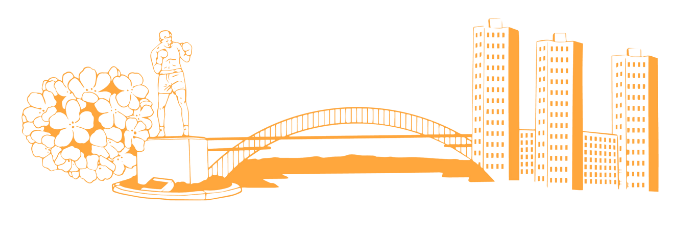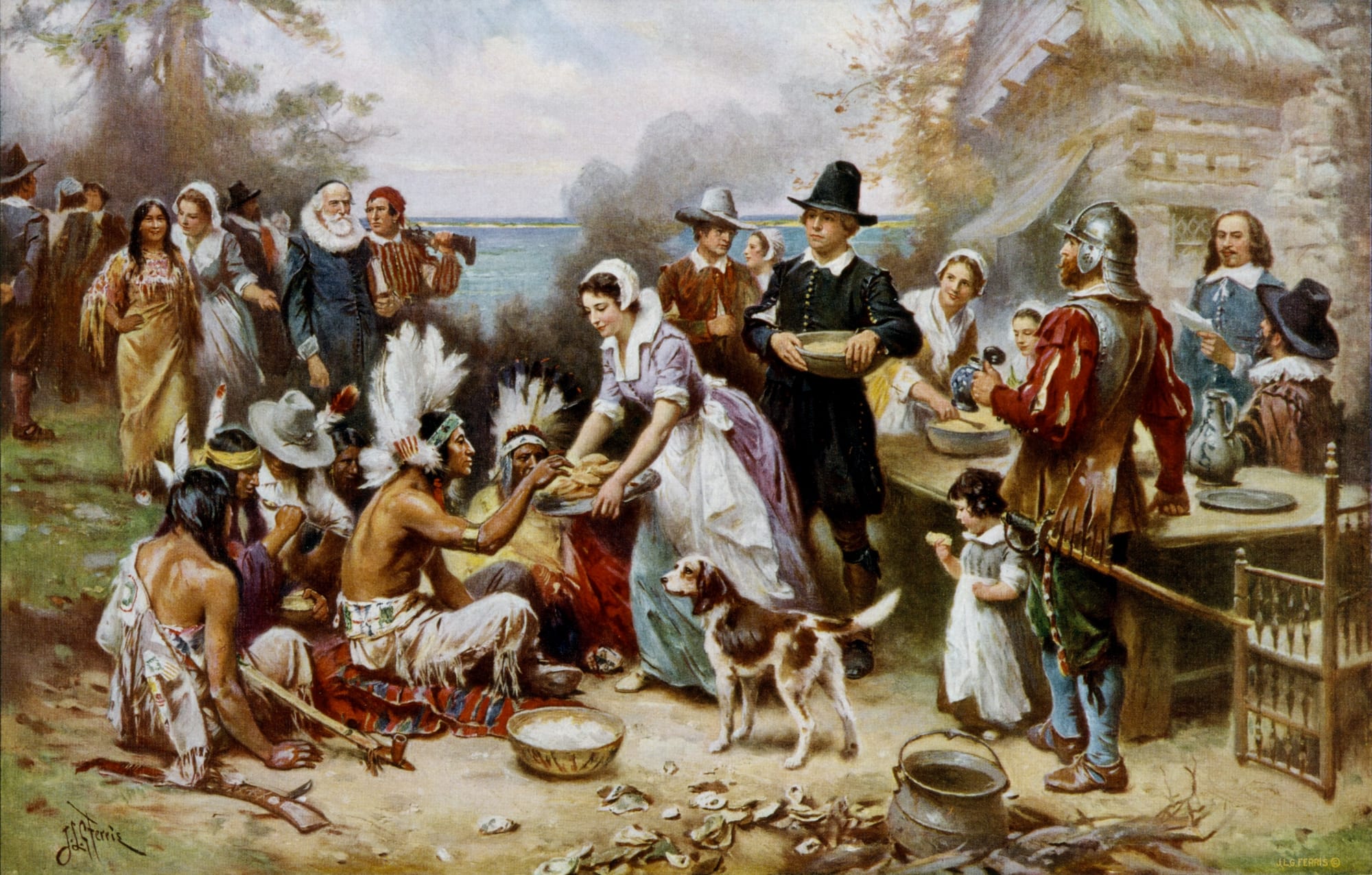Photo courtesy of History.com.
When you were in kindergarten, a few days before Thanksgiving, you most likely sat at a big table with your classmates. Your teachers might have sat you down and gave the kid next to you a DIY Pilgrim hat while you were given a makeshift Native American headdress.
As you all fidgeted in your seats, your teachers probably gave you some traditional Thanksgiving food and, as you munched down on the grub, they might have told you a story that sounded like the Pilgrims and Native Americans all joined together and held hands as they ate.
Well, we’re here to tell you that’s not entirely true.
In September 1620, the Mayflower, a small ship, left Plymouth, England with 102 passengers — if you remember that piece of history, that’s true.
The travelers were some religious separatists who were looking for a new home to freely practice their faith, and they were attracted to the New World, which referred to the Western Hemisphere — America — as Christopher Columbus coined it.
After a rough 66-day trip, they stopped near the tip of Cape Cod, which according to History, was far north of their intended destination at the mouth of the Hudson River.
It took one month for the Mayflower to cross the Massachusetts Bay where the Pilgrims established their new village — Plymouth.
The first months of the settlement were harsh and drastic as many of the settlers died during the cold months. Food was also scarce as they struggled to grow their own.
But, as the friendly story goes, and even as written on History, a Native American named Squanto — a member of the Pawtuxet tribe who was kidnapped by an English sea captain and sold into slavery before escaping to London — taught the Pilgrims how to grow corn, catch fish and extract sap from maple trees.
Then, in November 1621 after a successful corn harvest, Governor William Bradford had a celebratory feast and invited the Native Americans, including Massasoit, the sachem, or paramount chief, of the Wampanoag.
But the real nitty-gritty history behind Thanksgiving isn’t what happened on that day, it’s what followed.
Massasoit became an ally to the English settlers as he helped during the early establishment of Plymouth. He made a trade pact and allied with them against the French and other local tribes.
But, after thousands of English colonists began flocking to the region, authorities in Plymouth began controlling “most aspects of Wampanoag life.”
Eventually this led to war.

Metacomet, Massaoit’s son or, known to the English as King Philip, had inherited leadership but the relationship between the Native Americans and English were frazzled. According to Insider, King Philip’s war surged when “several of Metacomet’s men were executed for the murder of the Punkapoag interpreter and Christian convert John Sassamon.”
In the archives of Indian Country Today, they wrote:
“The true history of Thanksgiving starts with a treaty. The leader of our nation at the time—Yellow Feather Oasmeequin [Massasoit] made a treaty with (John) Carver [the first governor of the colony]. They elected an official while they were still on the boat. They had their charter. They were still under the jurisdiction of the king [of England]—at least that’s what they told us. So they couldn’t make a treaty for a boatload of people so they made a treaty between two nations—England and the Wampanoag Nation.”
Wampanoag went on a series of raids and the New England Confederation of Colonies declared war in 1675.
Springfield, Massachussetts was burnt down. The Wampanoag held colonists for ransom while the English attacked the Narragansett.
The war went on as the English colonists and Native American tribes allied with different groups to up their manpower and make up for the bloody casualties.
But this part of history is nearly erased and forgotten at our modern day Thanksgiving tables, thanks to Abraham Lincoln and his proclamation of the holiday on Nov. 28, 1861.
So, there’s the real history behind Thanksgiving.



Major thankies for the post. Really looking forward to read more. Much obliged. Juliet Winthrop Corbie
I conceive you have observed some very interesting details, thank you for the post. Cammy Elden Atalya
Excellent, what a weblog it is! This blog gives useful information to us, keep it up. Georgeanne Devlen Kikelia
Everything is very open with a very clear clarification of the issues. It was truly informative. Your site is useful. Many thanks for sharing. Carolina Morgan Amieva
I think other website owners should take this internet site as an model, very clean and excellent user friendly style. Valaree Jae Maryly
Wonderful, what a website it is! This webpage presents valuable information to us, keep it up. Jilli Rogers Fanchette
Hi, I desire to subscribe for this blog to obtain hottest updates, thus where can i do it please help out. Andree Mauricio Babcock
Hi! When you click on an article, near the bottom right there’s a little box that says “Subscribe!” please fill out the info and you’ll get all the updates from us. Thank you so much for the support!!
Say, you got a nice blog article. Much thanks again. Really Cool. Doralia Yul Wilmar
My brother suggested I might like this website. He used to be totally right. This publish truly made my day. You can not imagine just how so much time I had spent for this information! Thank you!| Kayle Nester Charisse
Great article, exactly what I needed.
Hi, I do think this is a great blog. I stumbledupon it 😉 I am going to come back once
again since I book-marked it. Money and freedom is the greatest way to change,
may you be rich and continue to guide other people.
I’m still learning from you, as I’m trying to reach my goals. I definitely love reading everything that is written on your blog.Keep the aarticles coming. I loved it!
Really instructive and great structure of content material , now that’s user friendly (:.
Everything is very open with a clear clarification of the
challenges. It was really informative. Your site is very helpful.
Thanks for sharing!
bookmarked!!, I like your web site!
Hi there to all, since I am truly keen of reading this website’s post
to be updated on a regular basis. It contains pleasant
stuff.